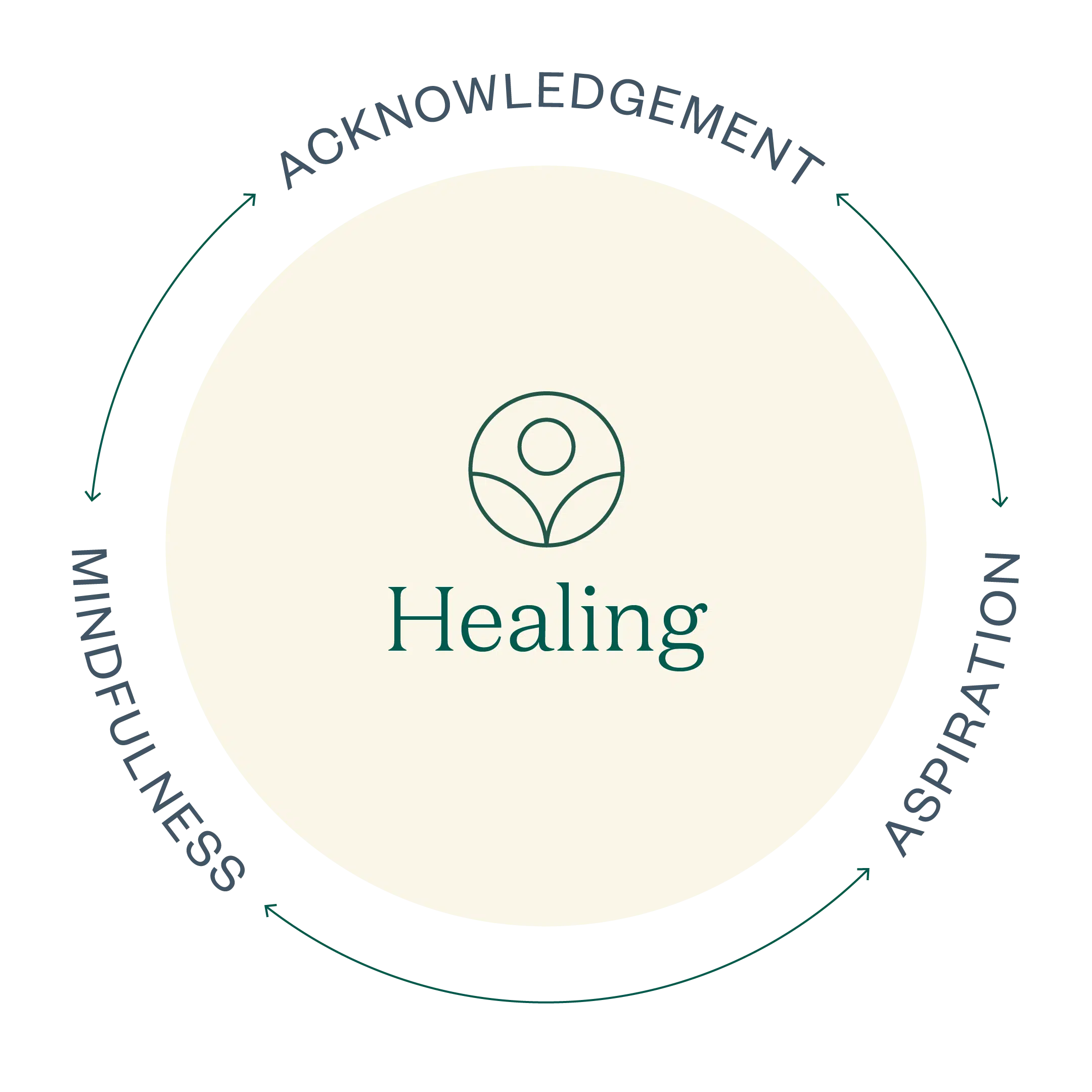Saprea > Online Healing Resources > Our Approach >Mindfulness and Healing From Sexual Abuse
In recent years, there has been a lot of discussion about the practice of Mindfulness and the positive impacts it is proven to have on emotional health, the ability to focus, relationship skills, and feelings of overall well-being.1 Because of its benefits, Mindfulness is being integrated in classrooms, workplaces, and community education programs, not to mention the many mental and physical health professionals who recommend Mindfulness as part of a holistic approach to improving health.
Because Mindfulness can be especially helpful in the work of recovering from trauma, it is a major component of what our clinicians teach at the Saprea Retreat and during the Saprea Healing Webinar. Mindfulness can also be learned and practiced at home, and because it is such a powerful and foundational way of being, we feature Mindfulness as one of our three healing practices to support the healing and growth for survivors of childhood sexual abuse.
Many survivors of child sexual abuse deal with symptoms associated with the trauma of the past. This is because their brains and bodies are conditioned to respond to situations and environments as though they are still trying to protect themselves from the abuse. Part of healing from the trauma of child sexual abuse includes retraining the brain and body to do the following:
- Respond to the present moment.
- Pause and intentionally take in the surroundings.
- Notice what the body is feeling and the mind is thinking.
Healing is a day-by-day, step-by-step process, and Mindfulness is key to staying in the present moment, despite the highs and lows that will come with doing the work to heal.
Mindfulness
Intention: Purposefully Making a Decision to Attend to the Present Moment
Learning to pause and intentionally focus on the present doesn’t need to be an overly complicated process. Teaching your mind to come back to the present moment may be accomplished by something as simple as asking yourself a few questions:
- Can I feel my lungs expand and contract with each breath I take?
- Can I identify some of the background noises in my current environment?
- Are there parts of my body that are cold? Hot?
- In my current environment, what do I see that’s blue? Or what do I see that I’ve never noticed before?
Attention: Noticing What Is Happening Internally and Externally
Attitude: Approaching Our Experiences Without Judgement
Mindfulness could look something like this:
- Intention: “As I take my walk this morning, I want to try not to think too much about work. I need a break from that stress, so I’m going to choose something to focus on while I walk to keep me in the present moment. Because yellow is my favorite color, I’m going to look for anything that is a shade of yellow.”
- Attention: “It’s a bit cold outside this morning. I should have brought my gloves. Did I leave them in my car? Oh! Yellow! I want to practice Mindfulness. The bus down at the end of the road is yellow. The traffic light. The Millers have the most lovely tulips. I wonder how they get them to grow so big? Maybe I should plant some this next year when… Oh yeah! Yellow! The plastic bag caught in that tree is a yellowish color. Those park benches are yellow. Faded yellow. I actually really like that shade. The poster in that shop has a yellow background. There’s yellow. And more yellow. I need to remember to call the doctor’s office. Maybe after I get to work. That fire hydrant has yellow; the paint is peeling so the old red paint shows through.”
- Attitude: “My mind keeps wandering, and that’s okay. I’m going to keep noticing where my thoughts go, without judgment or criticism. I’m not going to feel frustrated or try and change what I am thinking. Instead, I’m going to kindly observe what things come to my mind as I notice the yellow in my neighborhood. I don’t mind that my thoughts wander because it demonstrates my mind’s curiosity. And, as I practice Mindfulness, it feels good to simply observe the connections I make and the memories I recall.”
Mindfulness Is Part of the Cycle of Healing
Many of us learned about the Water Cycle in our schooling. As the Water Cycle begins, water falls from the sky in the form of rain or snow. The rain or snow collects into bodies of water (ponds, streams, lakes, oceans, etc.). As the sun shines on the bodies of water and heats it, the water evaporates and its reduced weight allows it to float into the sky, where it accumulates into clouds. The clouds become increasingly dense and heavy, and when weather conditions are cool enough, the water in the clouds condenses and forms droplets that, again, fall to the earth as rain or snow. This cycle continues over and over again and is a major factor in sustaining life.
Healing is a lot like the Water Cycle: stages and steps repeated over and over. Sometimes certain stages of healing take extra time, and some stages are uncomfortable and you’ll wish the “weather” would change. But each part of the cycle is important, and the work you do in each stage will literally sustain your healing.
Let’s extend the weather analogy to Mindfulness; you can imagine what it feels like to have the sun shine on your skin, to feel the wind whip around you, or to feel the heavy humidity before the downpour of the rain. Some of these are pleasant feelings, and some you likely prefer not to feel for very long. But, allowing yourself to experience the weather, the cold and hot, the sun and rain, the wind and calm, are all a part of healing. As you practice being mindful, you allow your body, mind, and heart to witness the range of the human experience, and you allow yourself the grace to be human in the process.
You’ll notice with practice that Acknowledgement may lead you to Mindfulness, which may lead you back to Acknowledgement, and that somewhere in there you may find yourself moving toward Aspiration. This cycle of healing can teach you so much about yourself, your experiences, and the things that motivate you.

Healing Resources for Practicing Mindfulness

Emotion Wheel

Movement
